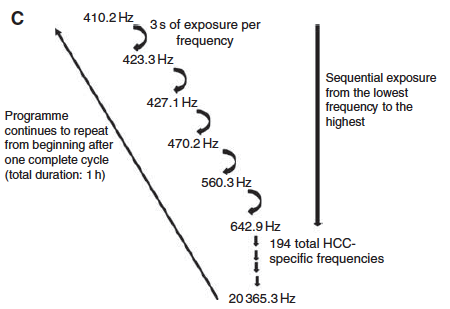Exploring the Pathogenic and Therapeutic Potential of RF Radiation Exposure

In the ever-evolving world of medical science, the therapeutic use of radiofrequency (RF) radiation in cancer treatment is challenging long-standing beliefs about non-ionizing radiation. This emerging field not only paves the way for innovative treatments but also calls for a reevaluation of public health guidelines and medical research approaches.
Reassessing Non-Ionizing Radiation
Traditionally, non-ionizing radiation, which includes RF radiation commonly emitted by cell phones and other wireless devices, has been deemed safe. This classification stemmed from the understanding that non-ionizing radiation lacked the energy to directly damage DNA or cells. However, recent advancements in medical treatments, specifically the pioneering therapy known as TheraBionic, are turning this notion on its head.
The TheraBionic Breakthrough

TheraBionic represents a significant leap in using RF radiation therapeutically. This treatment employs RF radiation at power levels up to 1000 times lower than those emitted by cell phones, effectively treating inoperable liver cancer. What makes TheraBionic particularly groundbreaking is its operation in a frequency range that overlaps with human audible sound, employing Hz frequency amplitude-modulated radiation in a non-invasive and patient-friendly manner.
Mechanisms Beyond Heating
The therapeutic action of TheraBionic and similar treatments lies not in the thermal effects of RF radiation but in more subtle, non-thermal interactions at the cellular or molecular level. These include resonance effects, disruption of cellular signaling, and potential modulation of the immune system. This contradicts the traditional view that non-ionizing radiation is biologically inert, except for its heating properties.
Implications for Public Health and Research
The successful therapeutic application of RF radiation in cancer treatment has significant implications for public health policies and the direction of medical research dealing with RFR radiation.
Updating Public Health Guidelines
Current public health guidelines regarding RF radiation exposure are largely based on the thermal effects of this radiation. However, the efficacy of treatments like TheraBionic suggests that even low-level, non-thermal RF radiation can have profound biological effects. This necessitates an urgent reevaluation and update of these guidelines, taking into account the latest scientific findings.
Fostering Research and Innovation
Understanding the precise mechanisms through which RF radiation exerts therapeutic effects is vital. This knowledge will not only enhance current treatments but could also lead to the development of new therapies for various medical conditions using non-ionizing radiation. Research should focus on the long-term health effects of modern wireless technology, comparative studies of different frequencies and intensities, and the potential impacts on vulnerable populations.
Embracing the Precautionary Principle
Given the ongoing scientific investigation into the effects of RF radiation, adopting the precautionary principle is crucial. Practical measures can include promoting safer cell phone usage, encouraging the development of devices with lower Specific Absorption Rates (SAR), and protecting sensitive demographics like children and pregnant women.
Conclusion
The use of RF radiation in treating liver cancer is a testament to the dynamic nature of medical science and its ability to challenge and redefine existing paradigms. As we continue to uncover the complex interactions between RF radiation and biological systems, it is imperative that public health policies and medical research methodologies evolve in tandem. By doing so, we can harness the full potential of this technology, not only as a powerful tool in cancer treatment but also as a guide for safer public health practices in our increasingly wireless world.

“The thermal and non-thermal dividing line currently used as the basis for safety standards of radio frequency radiation exposures (SAR) is no more than a “red herring,” a distraction from the public’s understanding of the actual health effects of microwave radiofrequency radiation and therefore our ability to protect the public. It increasingly appears invalid to distinguish ionizing from non-ionizing radiation with respect to their health effects. “
Bottom line… Cell phone radiation in not safe for everyone! We honestly don’t know who will be affected by the cell phones microwave RF Radiation exposure because everyone’s DNA is different but we do know some people are affected even today!! Just as some people can die from bee stings and some don’t. We just don’t know if you’ll be safe using a cell phone and neither does anyone else… including the FCC, FDA, the cell phone manufacturers and all the “so called experts”!
After all, how many other products have we been told were “safe”. by Industries and government alike, that later turned out to be be toxic, dangerous… even fatal?
Will cell phones join these killers on the “Gee, we thought it was safe” list? We’d say so, furthermore no one can prove to RF Safe that they are not one of the largest newly growing health threat we face today! It may take years, even decades, before all of the research has been accumulated and the truth becomes known.
Is the clock ticking for cell phone users? It may well be your clock ticking. Please… don’t allow yourself to become a statistic!
Do your best to stay up-to-date on the wireless EMF hazards we face today!
PLEASE Be RF Safe To Be Sure!